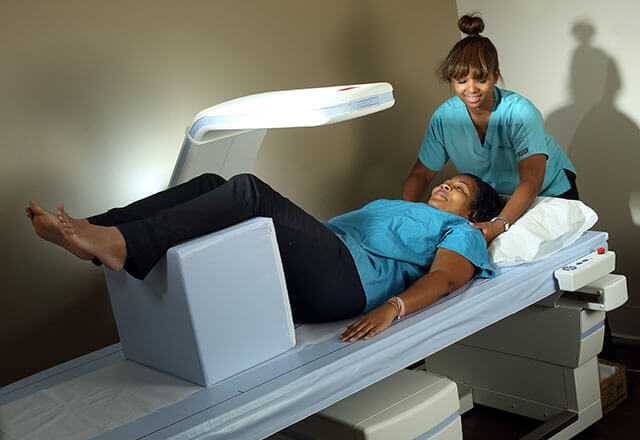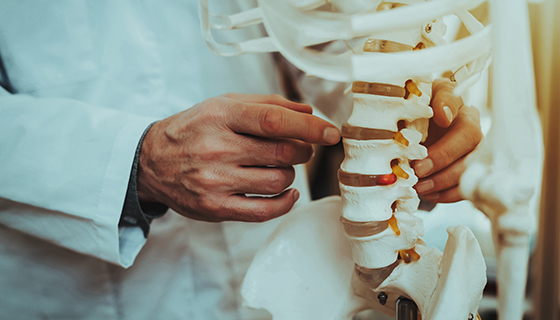Exams We Offer: Bone Densitometry (DEXA)

A bone density scan, also called DEXA, uses an X-ray to measure the bone mineral content and density. A DEXA scan produces more detailed images than a standard X-ray and helps to identify fragile bones before they break. A DEXA measures the bone density of spine, pelvis, lower arm and thigh.
Our team at Johns Hopkins Medical Imaging provides compassionate patient care and high-quality imaging in convenient suburban locations. Using the most advanced technology and equipment, our highly trained radiologists and imaging technologists tailor each exam to your specific needs and diagnosis.
Request An Appointment Request An Appointment
Schedule by phone
New and existing patients: 443-997-7237

How do I prepare for a DEXA exam?
-
PRECAUTIONS: Notify the technologist if you are pregnant or think you may be pregnant. Ensure that you have not had a barium or nuclear medicine exam within the past 72 hours.
EAT/DRINK: Do not take calcium supplements 24 hours prior to your exam.
CLOTHING: In some cases, you may stay dressed but will be asked to remove all metallic objects such as belt buckles, zippers, coins, keys and jewelry. In other cases, you will be given a gown to wear so that no buttons, zippers or hooks will interfere with the imaging process.
Based on your medical condition, your health care provider may request other specific preparations.
-
- You will be positioned on a table, lying flat on your back. Your legs will be supported on a padded box which serves to flatten the pelvis and lumbar spine.
- Under the table, a photon generator will pass slowly beneath you, while an X-ray detector camera will pass above the table parallel to the photon generator beneath, projecting images of the lumbar spine and hip bones onto a computer monitor.
- After the scan of the lumbar spine and hip bones is complete, your foot will be inserted into a brace that moves your non-dominant hip (the side you use the least) into a rotated position.
- The next imaging procedure may involve the radius, one of the two bones of the lower arm. The non-dominant arm (the arm you use the least) is usually examined, unless there is a history of a fracture of that arm.
- The computer will calculate the amount of photons that are not absorbed by the bones to determine the bone mineral content. The bone mineral density will then be calculated by a radiologist.
-
- There is typically no special type of care after a DEXA scan. You may resume your normal diet and activities, unless your doctor advises you differently. Your doctor may give you additional or alternate instructions after the procedure, depending on your particular situation.
Why Choose Johns Hopkins Medical Imaging?
Johns Hopkins Medical Imaging brings the world-class expertise of Johns Hopkins to your community. Why does expertise matter? Because you matter. Here is how we do it:
Physician Experts
We set the standard for other radiologists around the world.

#1 Radiology Department
We are the top-ranked radiology department by U.S. News and World Report.
State-of-the-Art Technology
Doing the right study with high quality increases accuracy.

Your Safety Is Always Our Priority
We take comprehensive safety measures to minimize any possible risk.

Specialty Technologists
Our dedicated staff work in their exclusive fields and are trained to the same high standards.

Patient Care
We’re here to make you feel safe and comfortable during your appointment.



